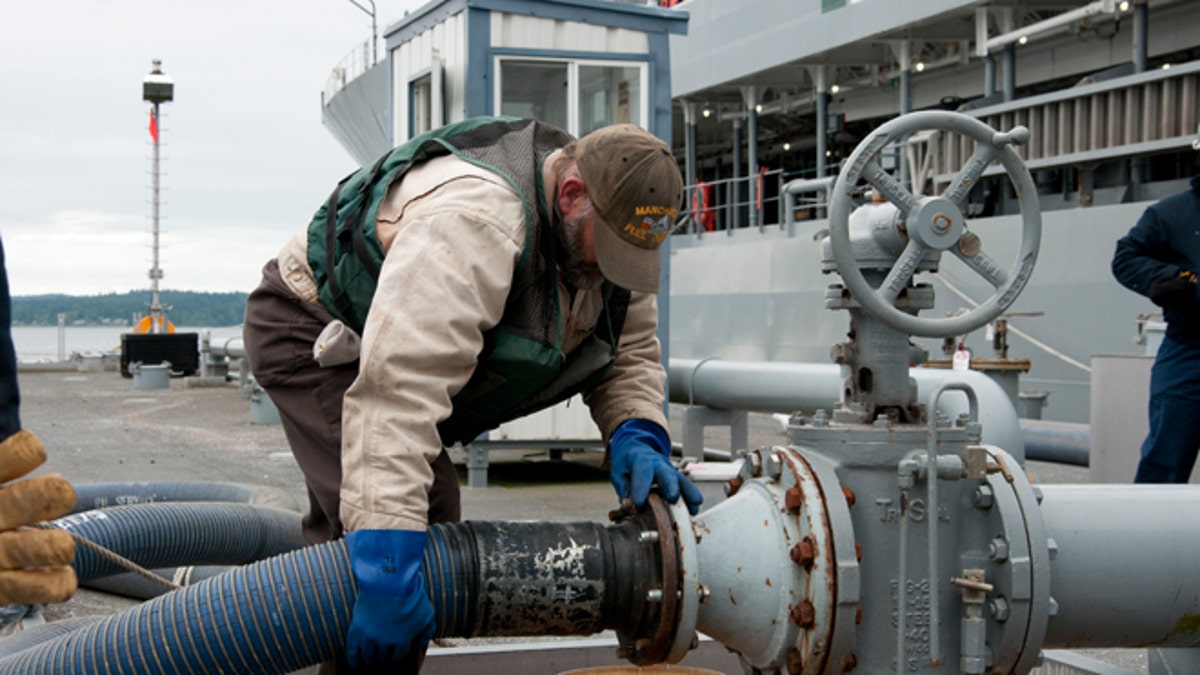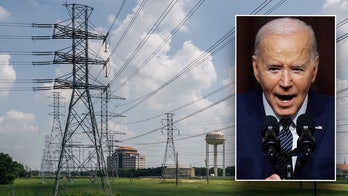
June 13, 2012. A Navy fuell specialist David Riggs secures a hose during a biofuels transfer to oiler USNS Henry J. Kaiser. (U.S. Navy)
The Navy is steaming ahead with an initiative to power ships with biofuel, despite criticism the so-called “green fuel” costs nearly seven times more than conventional fuel.
This month marks the first time the Navy is using biofuel in an operational setting -- sending five ships to a multi-nation exercise off the coast of Hawaii.
A Navy official told FoxNews.com on Monday that sailing the so-called “Great Green Fleet” this month on the 50-50 blend of alternative and conventional fuel is part of Navy Secretary Ray Mabus’ plan to have half the Navy fleet on alternative fuel by 2020.
The spokesman also confirmed the fuel -- which does not require engine modifications -- costs $26 a gallon compared to $3.60 a gallon for conventional fuel.
However, he pointed out the cost was for a one-day supply and that prices will drop when the Pentagon, among the country’s biggest fuel users, buys more.
Capitol Hill Republicans have been among the biggest critics of the plan -- questioning the fuel's cost and President Obama's alternative-energy initiatives as either not ready or too expensive for the marketplace.
They point to the government-funded Solyndra solar panel company going bankrupt as a cautionary tale.
"I don't believe it's the job of the Navy to be involved in building ... new technologies. I don't believe we can afford it," said Arizona Sen. John McCain, the ranking Republican on the Senate Armed Services Committee, according to Reuters.
McCain’s office did not return a request for comment Monday afternoon.
Rep. Randy Forbes, a Republican on the House Armed Services Committee, is another critic. He argues that studies show biofuel will always be more expensive and accuses Mabus of failing to provide Congress with a full cost analysis, according to Reuters.
The Navy official said, “Investments in biofuel will produce a competitively priced -- and domestically produced -- alternative to conventional fuel. Such investments help the Navy and the nation become less dependent on foreign oil and thus less subject to volatility in oil prices that directly affect our readiness.”
The so-called "drop-in" fuels are derived from seeds, algae and chicken fat.
The collection of Navy ships headed to the Pacific Rim for the six-week exercise this month is known as a carrier strike group -- which includes a destroyer, tanker and an aircraft carrier as its centerpiece.




